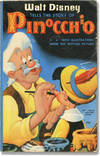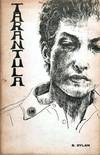
Chirurgia è Graeco in Latinum conversa, Vido Vidio Florentino interprete
by GUIDI, Guido [VIDIUS, Vidus]
- Used
- very good
- Hardcover
- first
- Condition
- Very Good
- Seller
-
Ritterhude, Germany
Payment Methods Accepted
About This Item
RARE FIRST EDITION, VARIANT WITH PRINTER'S WOODCUT DEVICE ON TITLE, of Guido Guidi's translation of Nicetas' Codex into Latin. One of the most beautiful scientific books of the Renaissance, comparable only to Vesalius's De fabrica (1543) and Estienne's De dissectione (1545), this edition includes Latin translations of treatises on surgery by Hippocrates (De ulceribus, De fistulis, and De vulneribus capitis), Galen (De fracturis, De articulis, De officina medici, and De fasciis), Oribasius (De laquis and De machinamentis), and others, with commentaries by Galen and other ancient writers. Hippocrates' treatise on dislocations and Soranus' work on bandages are illustrated with woodcuts, many of them full-page, which illustrate the treatments discussed in the text. Both texts and illustrations derive from a tenth-century illustrated Greek manuscript compiled by the Byzantine physician Nicetas. Brought to Italy by Janus Lascaris in 1495, this codex (now Florence, Laur. Plut. LXXIV, 7) was used by the Florentine physician Guido Guidi for the preparation of this Latin translation. Guidi, a native of Florence and grandson of the painter Domenico del Ghirlandaio, was physician to King Francis I of France and the first professor of medicine at the Collge de France (1542-48). The woodcuts, probably by Francois Jollat, were based on drawings by Primaticcio and Jean Santorinos that were copied in turn from the tenth-century codex. These drawings survive, together with Guidi's reference to the artists, in the dedication manuscript of the translation presented to Francis I (Paris, BNF lat. 6866; see H. Omont, Collection des chirurgiens grecs avec dessins attribus au Primatice, Paris n.d.). The origin of the designs has been traced back to the first century B.C.; they were undoubtedly transmitted directly from Antiquity to Byzantium and so may be regarded as embodying the genuine Hippocratic tradition of surgical practice (H. Schne, Apollonius von Kitium, Leipzig 1896).
"In 1542, Guidi presented an illustrated copy of this manuscript, along with his own Latin translation (likewise illustrated), to Francois 1 of France [...] Guidi had his Latin translation printed by Pierre Gaultier, a printer residing at the castle of Benvenuto Cellini, where Guidi also lived during the time he spent in Paris. The Chirurgia was the only one of Guidi's works published during his lifetime. The exquisite woodcuts of apparatus adorning Guidi's text are copies of the drawings in Guidi's Latin manuscript, which have been claimed, on the basis of a brief reference in the manuscript, to be the work of the Italian mannerist Francesco Primaticcio... References and literature: Dibner 118; Norman 954; Garrison-Morton 4406.1; Heirs of Hippocrates 263; Mortimer (French) 542; NLM/Durling 2204; Wellcome I, 6596; Choulant-Frank 211 f.; Cushing G445; Osler 155; M.Hirst, Salviati illustrateur de Vidus Vidius, Revue de l'Art 6(1969), pp. 19-28; Kellett, The school of Salviati and the illustrations to the Chirurgia of Vidis Vidius, 1544, Medical history 2 (1958), pp. 264-268. Visit our website for further reading and images!
Reviews
(Log in or Create an Account first!)
Details
- Bookseller
- Milestones of Science Books
(DE)
- Bookseller's Inventory #
- 003763
- Title
- Chirurgia è Graeco in Latinum conversa, Vido Vidio Florentino interprete
- Author
- GUIDI, Guido [VIDIUS, Vidus]
- Format/Binding
- Hardcover
- Book Condition
- Used - Very Good
- Quantity Available
- 1
- Edition
- 1st Edition
- Publisher
- Pierre Gaultier
- Place of Publication
- Paris
- Date Published
- 1544
- Keywords
- Medicine, surgery, bandages, Galen, Hippocrates, Nicetas codex, dislocations
- Bookseller catalogs
- Medicine; Dibner - Heralds of Science;
Terms of Sale
Milestones of Science Books
Prices include VAT for shipments within Germany or to consumers inside the EU. Shipping costs depend on shipping destination and are added on the price.
**Imprint:**
Terms according to German law § 5 TMG:
Jörn Koblitz
Milestones of Science Books
Schulstrasse 18A
D-27721 Ritterhude
Contact:
Phone: +49 (0)421 1754235
E-Mail: info@milestone-books.de
**VAT-ID**
VAT-Identification number according to German law §27a Umsatzsteuergesetz:
DE272372101
Person, responsible for the content on this web site according to § 55 Abs. 2 RStV (German act):
Jörn Koblitz
Schulstrasse 18A
27721 Ritterhude, Germany
**Online Dispute Resolution (ODR):**
Online dispute resolution according to Article 14(1) ODR-VO: The European Commission provides a platform for settling oline disputes. It is accessible under: http://ec.europa.eu/consumers/odr/
Source: created by imprint-Generator of: http://www.e-recht24.de
About the Seller
Milestones of Science Books
About Milestones of Science Books
Glossary
Some terminology that may be used in this description includes:
- Calf
- Calf or calf hide is a common form of leather binding. Calf binding is naturally a light brown but there are ways to treat the...
- Raised Band(s)
- Raised bands refer to the ridges that protrude slightly from the spine on leather bound books. The bands are created in the...
- Morocco
- Morocco is a style of leather book binding that is usually made with goatskin, as it is durable and easy to dye. (see also...
- Edges
- The collective of the top, fore and bottom edges of the text block of the book, being that part of the edges of the pages of a...
- Folio
- A folio usually indicates a large book size of 15" in height or larger when used in the context of a book description. Further,...
- First Edition
- In book collecting, the first edition is the earliest published form of a book. A book may have more than one first edition in...
- Device
- Especially for older books, a printer's device refers to an identifying mark, also sometimes called a printer's mark, on the...
- Gutter
- The inside margin of a book, connecting the pages to the joints near the binding.
- Sunned
- Damage done to a book cover or dust jacket caused by exposure to direct sunlight. Very strong fluorescent light can cause slight...
- Bookplate
- Highly sought after by some collectors, a book plate is an inscribed or decorative device that identifies the owner, or former...
- Spine
- The outer portion of a book which covers the actual binding. The spine usually faces outward when a book is placed on a shelf....
- Leaves
- Very generally, "leaves" refers to the pages of a book, as in the common phrase, "loose-leaf pages." A leaf is a single sheet...






